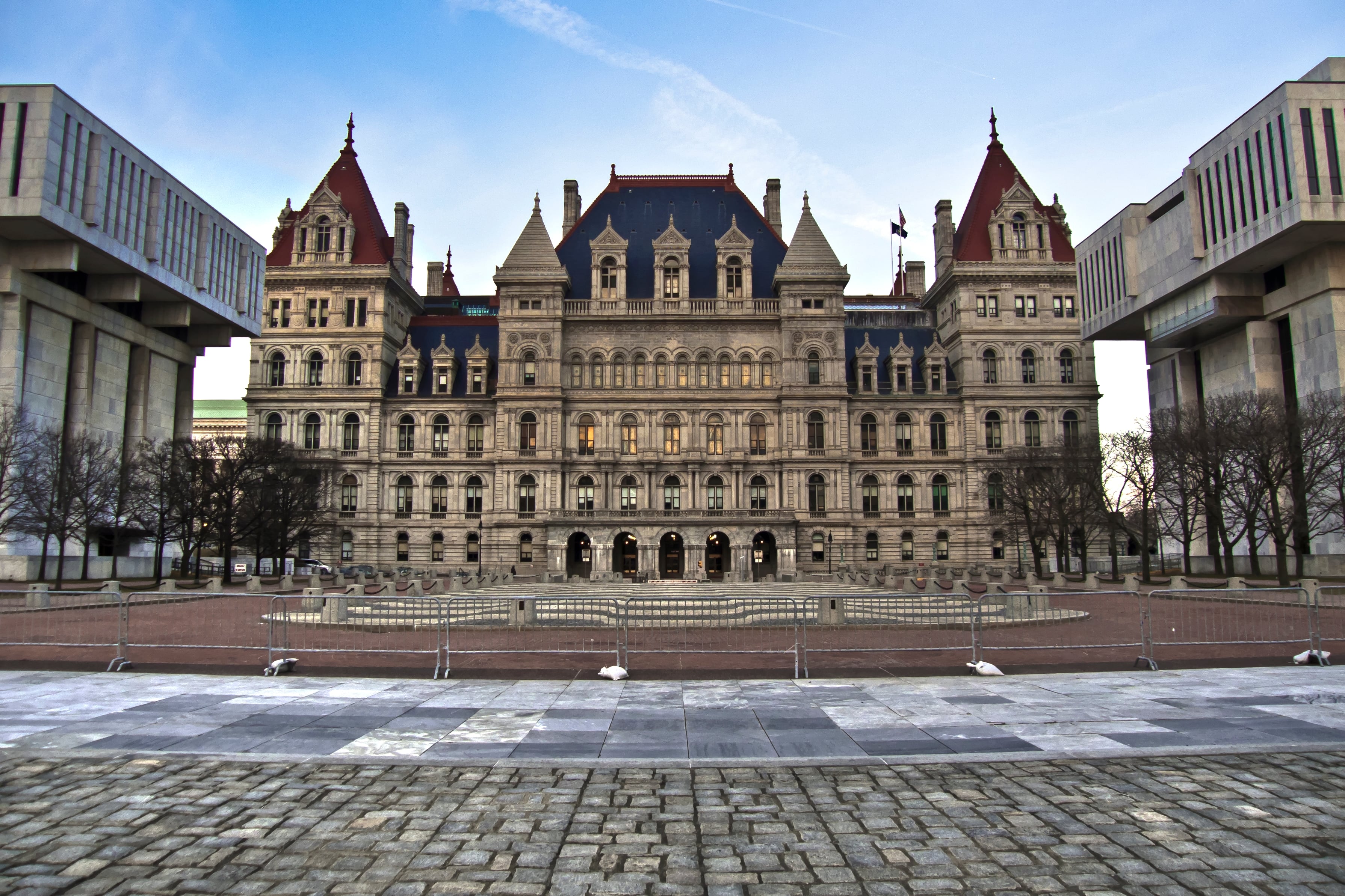Mayor Eric Adams won control of New York City’s public schools for two more years, but not without several changes to the system along with a new mandate to lower class sizes by 2027, state lawmakers decided early Friday.
Sen. John Liu, a Queens Democrat who helped craft the agreements, described the compromise over mayoral control — which has been regularly extended over the past two decades — as one where “everybody is unhappy.” But he said the bill allows for more parental involvement in the city’s school system, which was a priority for many state lawmakers and advocates as they spent the past several months considering changes.
“Parents have felt less and less and less engaged,” Liu said.
The measure to lower class sizes was markedly more popular among lawmakers and celebrated by many advocates, families and the teachers union, who have long pushed the city on the matter. City officials have warned that the bill will result in a costly mandate and cause funding cuts in other areas.
The bills, which now await Gov. Kathy Hochul’s signature, went against the wishes of the Adams administration, signaling that he has so far failed to curry enough favor in Albany.
The measures were expected to pass after lawmakers reached a deal earlier this week, two days before the end of the legislative session, leaving little time for public scrutiny or debate.
The plan to extend mayoral control, which was set to expire June 30, comes with several changes to the 15-member Panel for Educational Policy, or PEP, a largely appointed board that approves major contracts and some policy decisions, such as school closures. That deal also included a bill requiring New York City to lower class sizes between 20 to 25 students, depending on the grade.
Here are more details on both measures:
Mayoral control renewed for two years
Mayoral control in New York City hinges on two things: the mayor’s power to choose the schools chancellor and to appoint a majority of people to the PEP. Starting Aug. 15, the mayor still will appoint a majority of PEP members, but the panel will now have 23 members, and it will be harder to remove them for voting against proposals from City Hall.
Adams, who currently appoints nine members, will have 13 appointments, three of whom must be parents representing students with disabilities and those who are bilingual or learning English as a new language. Borough presidents will continue to each appoint a panelist. The presidents of the city’s 32 Community Education Councils, or CECs, which represent each local school district and can shape school zone boundaries, will elect five members that represent a different borough — four more than they currently choose.
In a significant change, each of these panelists will serve a one-year term that can be renewed annually, and they can no longer be removed for voting against their appointer’s wishes — one of the biggest criticisms of the current mayoral control system. Together, these changes could help PEP members mount effective opposition against controversial proposals from the Adams administration, one expert told Chalkbeat this week. (Adams has not removed any PEP members so far, but there were high-profile removals and at least one resignation under his predecessors.)
The teachers union praised the deal for infusing more parent voice into the city’s school governance system. But many others, including the principals union, criticized it for adding too much bureaucracy to the PEP and for not making it independent enough.
Some of that divide was on display as lawmakers briefly debated the issue Thursday, the last day of the legislative session. Brooklyn Democratic Sen. Jabari Brisport voted against the plan, saying “lawmakers keep kicking the can down the road” instead of finding a more democratic school governance system. His colleague, Staten Island Republican Andrew Lanza, also voted no, but for the opposite reason: he said the plan adds more bureaucracy and “divests power from the mayor.”
A two-year extension fell short of the four years Adams and Hochul had sought, and, according to one source, it was the result of the mayor failing to give legislators a clear plan for what he would do with mayoral control. Adams blasted lawmakers for being “professional naysayers.” In a statement, schools Chancellor David Banks said expanding the PEP and adding fixed terms “puts more bureaucracy in the way of making real change for kids.”
The new PEP is also too large for the Education Council Consortium, a group of parent advocates who had pushed for bigger reforms to mayoral control and giving more power to CECs. That group said the one-year terms for PEP members are too short and could cause disruptive turnover. Additionally, they believe that PEP members should have more say over other school system policies, such as school safety requirements during the pandemic.
Class size reduction
Separately, lawmakers passed bills that will require New York City to limit class sizes over the next five years. By 2027, the city must cap classes at 20 students in kindergarten through third grade, 23 students for grades 4-8, and 25 students for high school classes. Physical education and classes for “performing groups” must be limited to 40 students.
By September, Banks must work with the presidents of the unions for teachers and principals to create a plan for how to achieve the new class size agreements.
As enrollment dropped and funding increased, class sizes averaged just under 25 students this school year.
“This is a win for every student,” said Sen. Robert Jackson, a Manhattan Democrat who has fought for years to shrink class sizes and boost state funding for school districts.
Advocates, families, and the teachers union described the bill as transformative for the city’s public schools. Research has found that smaller class sizes can lead to better student performance. One study in New York City found that academic gains only happened in smaller classes led by experienced teachers. Advocates point to research that has found that, in the long run, lowering class sizes can lead to less teacher turnover and more experienced staff.
But the measure is expected to be costly, as it will likely require hiring more teachers and construction of more classroom space. Officials have not come up with a full cost estimate, but the Adams administration projects it will cost $500 million annually just to shrink classes for grades K-5.
State lawmakers have said the cost can be covered by an increase in Foundation Aid, the state funding formula that sends more money to high-needs schools and was, in part, meant to address overcrowded classrooms. But city officials warn they’ll have to cut several other services for students, such as dyslexia screenings, social workers, school nurses, and summer programs.
The Citizens Budget Commission has pointed to cost-saving ways to reduce overcrowding, including rezoning elementary schools and using non-instructional space, but such alternatives could be politically tough to implement.
Some advocates are concerned about how effective the new law’s requirements will be. The city must submit an annual report to the state showing its progress on meeting the class size requirements, but they can also apply exceptions, such as “severe economic distress” and space issues – though, similar to the plan, these exceptions must also be agreed upon with educator unions. Liu’s office did not immediately respond to explain what each of the exceptions mean and to what extent the city can use them.
If the state education commissioner decides that the city is not making enough progress on lowering class sizes, the city must submit a corrective action plan on how it will meet requirements.
Reema Amin is a reporter covering New York City schools with a focus on state policy and English language learners. Contact Reema at ramin@chalkbeat.org.






